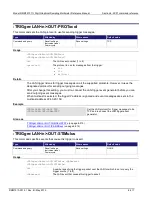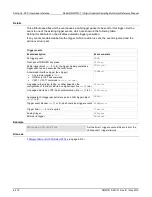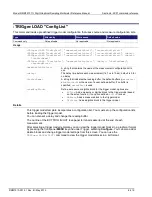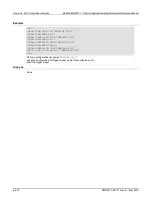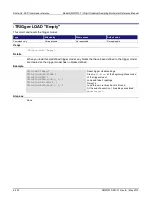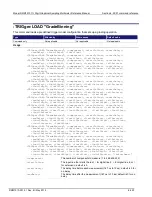
Model DMM7510 7½ Digit Graphical Sampling Multimeter Reference Manual
Section 6: SCPI command reference
DMM7510-901-01 Rev. B / May 2015
6-231
:TRIGger:LOAD "SimpleLoop"
This command loads a predefined trigger model configuration.
Type
Affected by
Where saved
Default value
Command only
Not applicable
Not applicable
Not applicable
Usage
:TRIGger:LOAD "SimpleLoop", <count>
:TRIGger:LOAD "SimpleLoop", <count>, <delay>
:TRIGger:LOAD "SimpleLoop", <count>, <delay>, "<bufferName>"
:TRIGger:LOAD "SimpleLoop", <count>, <delay>, "<bufferName>", <readingBlock>
<count>
The number of measurements the instrument will make
<delay>
The delay time before each measurement (167 ns to 10 ks); default is 0 for
no delay
<bufferName>
A string that indicates the reading buffer; the default buffers (
defbuffer1
or
defbuffer2
) or the name of a user-defined buffer; if no buffer is
specified,
defbuffer1
is used
<readingBlock>
Define a measure or digitize block for the trigger model; options are:
•
ACTive
: Add a measure or digitize block to the trigger model based
on the active function; if no option defined,
ACTive
is used
•
MEASure
: Adds a measure block to the trigger model
•
DIGitize
: Adds a digitize block to the trigger model
Details
This command sets up a loop that sets a delay, makes a measurement, and then repeats the loop the
number of times you define in the count parameter.
The out line of the EXT TRIG IN/OUT rear-panel terminal is asserted at the end of each
measurement.
After selecting a trigger model template, you can view the trigger model blocks in a graphical format
by pressing the front-panel
MENU
key and under Trigger, selecting
Configure
. You can also add or
delete blocks and change trigger model settings from this screen.
You can use the
TRIGger:BLOCk:LIST?
command to view the trigger model blocks in a list format.
Example
*RST
SENS:FUNC "CURR"
SENS:CURR:RANG:AUTO ON
TRIG:LOAD "SimpleLoop", 10
INIT
*WAI
TRAC:DATA? 1, 10, "defbuffer1", READ, REL
Reset the instrument and set it to
measure current with automatic range
setting.
Set a simple trigger loop with a count of
10.
Start the trigger model.
Postpone execution of subsequent
commands until all previous commands
are finished.
Read data and return the reading and
relative time.
Also see
None

